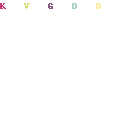High-intensity compared to moderate-intensity training for exercise initiation, enjoyment, adherence, and intentions: an intervention study
High-intensity compared to moderate-intensity training for exercise initiation, enjoyment, adherence, and intentions: an intervention study
(Click here to read full study)
Abstract
Background:
Understanding exercise participation for overweight and obese adults is critical for preventing
comorbid conditions. Group-based high-intensity functional training (HIFT) provides time-efficient aerobic and
resistance exercise at self-selected intensity levels which can increase adherence; behavioral responses to HIFT are
unknown. This study examined effects of HIFT as compared to moderate-intensity aerobic and resistance training
(ART) on exercise initiation, enjoyment, adherence, and intentions.
Methods:
A stratified, randomized two-group pre-test posttest intervention was conducted for eight weeks in 2012
with analysis in 2013. Participants (n = 23) were stratified by median age (< or≥28) and body mass index (BMI; < or≥ 30.5). Participants were physically inactive with an average BMI of 31.1 ± 3.5 kg/m2, body fat percentage of 42.0 ± 7.4%, weight of 89.5 ± 14.2 kg, and ages 26.8 ± 5.9 years. Most participants were white, college educated,
female, and married/engaged. Both groups completed 3 training sessions per week. The ART group completed
50 minutes of moderate aerobic exercise each session and full-body resistance training on two sessions per week.
The HIFT group completed 60-minute sessions of CrossFit™ with actual workouts ranging from 5–30 minutes.
Participants completed baseline and posttest questionnaires indicating reasons for exercise initiation (baseline),
exercise enjoyment, and exercise intentions (posttest). Adherence was defined as completing 90% of exercise
sessions. Daily workout times were recorded.
Results:
Participants provided mostly intrinsic reasons for exercise initiation. Eighteen participants adhered (ART = 9,
81.8%; HIFT = 9, 75%). HIFT dropouts (p = .012) and ART participants (p = .009) reported lower baseline exercise
enjoyment than HIFT participants, although ART participants improved enjoyment at posttest (p = .005). More HIFT
participants planned to continue the same exercise than ART participants (p = .002). No significant changes in BMI
or body composition were found. Workouts were shorter for HIFT than ART (p < .001).
Conclusions:
HIFT participants spent significantly less time exercising per week, yet were able to maintain exercise
enjoyment and were more likely to intend to continue. High-intensity exercise options should be included in public
health interventions.
Keywords:
Exercise, High-intensity, Functional movements, Moderate-intensity, Overweight, Obese, CrossFit,Enjoyment, Adherence, Intentions


